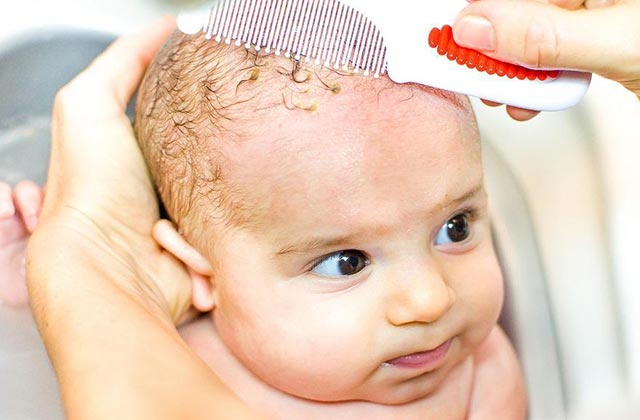Cradle cap is a common skin condition in newborns and babies that causes crusty or oily scaly patches on their scalp. Babies are known for their soft and smooth skin, but cradle cap causes thick white or yellow scales that aren’t easy to remove. Find our what rocketdoctor.ca says about cradle cap.
You might get worried seeing these rough patches on your baby’s head thinking that it’s something serious, but cradle cap is common and harmless. It usually clears up on its own in weeks or a few months. It is the baby form of dandruff.
You can usually get rid of it in few simple steps. Home care remedies like washing your baby’s scalp daily with mild shampoo can help loosen and remove the scales. It should go away on its own in time even if you don’t do anything about it. Never scratch cradle cap.
Signs and Symptoms of Cradle Cap
Cradle cap usually appears between 2 to 6 weeks of life. Some of the signs include:
- Changes in the colour of the scalp. The skin on your baby’s scalp may just look a different colour, rather than flaky or scaly
- Greasy, patchy scalp. The baby’s scalp may look greasy. White and yellow patches of scales on the scalp may appear. Over time, scales may flake off.
- Cradle cap on other parts of the body. Aside from the head, similar scales may also be present on the face, behind the ears, nose, armpits, diaper areas, and groin.
Cradle cap is the common term used for infantile seborrheic dermatitis. It is sometimes confused with another skin condition called atopic dermatitis. The major difference between the two skin conditions is that atopic dermatitis usually causes significant itching, while infantile seborrheic dermatitis is not usually itchy.
Causes of Cradle Cap
The cause of the cradle cap is not exactly known. One contributing factor that doctors suspect may be due to hormones that are passed on from the mother to the baby before birth. These hormones can cause excessive production of oil or sebum in the glands and hair follicles.
Another factor may be a yeast or fungus called Malassezia. It grows in the sebum along with bacteria. Antifungal treatments are recommended, such as ketoconazole, which is often effective when yeast is the contributing factor.
Cradle cap is not contagious and is not caused by poor hygiene. Here are five tips to successfully remove cradle up using natural ways:
1. Coconut oil
Coconut oil is one of the most useful home remedies for cradle cap. Coconut oil contains Vitamin E, fatty acids, and anti-fungal properties that work well for cradle cap. Most importantly, coconut oil is not harmful to the delicate skin of your baby. Take a few drops of coconut oil and apply it gently on the scalp of your baby, especially on the affected areas. Then, comb the hair with a soft comb after 10 minutes and wash it with baby shampoo. To see better results, repeat this process three times a week.
2. Baking soda
Baking soda has properties that are oil-absorbing and alkaline, which are both helpful in treating cradle cap. Take some baking soda and mix it with water. Apply the paste directly to the affected areas. Leave it for 10 minutes, then wash with baby shampoo. Use a hairbrush to remove soft flakes. Repeat this procedure once a day until cradle caps are completely gone.
3. Olive oil
Take a few drops of olive oil and apply it gently to your scalp and hair. Leave it for ten minutes then comb it with a fine-toothed hairbrush. Loosened crusted skin will wall off by brushing with the comb. After that, wash the head with mild baby shampoo. Repeat the process two to three times a week.
4. Petroleum Jelly
Directly apply the petroleum jelly to the affected skin. You can also mix it with a few drops of mineral oil. Leave it for ten minutes, comb with a fine-toothed brush, then rinse with a mild shampoo for babies. Repeat this treatment at least two to three times a week.
5. Apple cider vinegar
Apple cider vinegar contains acidic properties that help remove the cradle cap. This can be used in infants and toddlers. Use a cotton ball, dip it in apple cider vinegar, and then apply it to the affected areas on the scalp. Leave it for five minutes then wash with mild baby shampoo. Repeat the process twice a week.
When to see a doctorIf you have tried treating your baby’s cradle cap with the home remedies stated above, but patches and flakes continue spreading to your baby’s face or body, consult your pediatrician or doctor immediately. For online consultations on the internet, you can check online doctor Ontario for inquiries and for booking an online consultation. Know what’s good for your baby’s health.

